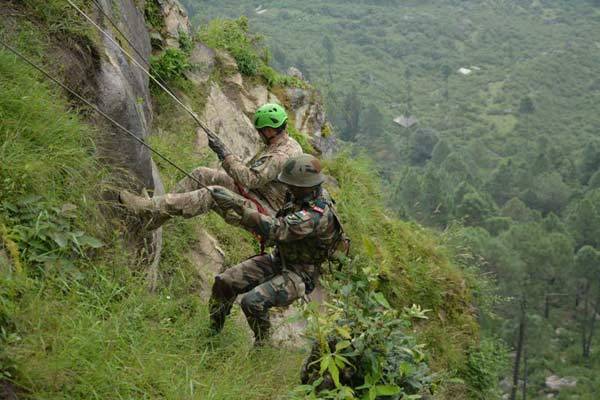I am not someone who would ever support any militaristic practice (and my opposition to the Army has grown stronger over the years because of crimes committed under AFSPA).
It’s funny how Indians respect the Army only on the basis of battlefield prowess or the hyper-nationalistic notion of defeating Pakistan.
What most people do not know is, Indian Army has been moving every inch towards environmental protection and we always fail to notice the tremendous amount of hard work being put into maintaining wildlife.
How did it begin?
The Second World War needed constant supplies of wood for construction and locomotives like trains. Reckless deforestation was the only solution to fulfill the never-ending demand.
Because the system was now loose, the rules for protection of wildlife were not strictly observed, which led to massive hunting by poachers.
In 1966, Indira Gandhi strengthened the Wildlife Protection Act, which started a series of changes.
During this period, retired General PP Kumarmangalam was made the President of World Wildlife Fund-India (WWF-India), and most of the retired Army officers took official positions in the tie-up.
It is because of this initiative that operations for wildlife conservation began in National Defence Academy, Pune and other institutions in the country, sometimes in collaboration with the Bombay Natural History Society.
Also read: A War Museum To Remind You Of A Forgotten History
How does the Army protect?
One of the most distinctive features of the Indian Army is the eight Ecological Task Forces (ETF)- probably the only Army to ever have such a force.
The main objective of the ETF is to revive arid deserts with some natural growth and to restore barren lands.
For instance, the Ecological Task Force of the Rajput Regiment has greened erstwhile Bhatti mines that you will find while going down the Chhattarpur Road.

What are the benefits under the Army?
1. No corruption within the department
Especially in the Himalayan region, forests are needed for strategic reasons. So forget any kind of timber mafia to ever operate there.
Hunting and poaching are strictly prohibited.
And since the objective of the Army to maintain forests is non-monetary, convincing the vigilantes to co-operate in corruption is a task.
2. Protection of indigenous plants
The cantonment areas in the lower Himalayas are the only places where you can find broad-leaved trees like oak and rhododendron trees along with deodar.
Rhododendron trees are endemic to the Himalayan region of the country. Thank the Army for doing their bit in preserving the species.
In Kota, Rajasthan, the infantry division of the Army redirected the water of the Chambal river and helped secure 10,000 indgenous plants. This not only happened because of structural measures but also the cnstant surveillance of the Indian Army on the area to make sure that the varieties are protected.
This not only happened because of structural measures but also the constant surveillance of the Indian Army on the area to make sure that the varieties are protected.
3. Local plantations
If you thought that the job of the ETF is only restricted to “maintaining forests” or “preventing desertification”, you have never been more wrong. The Army maintains plantations and orchards. These plantations then involve the local communities and villages to earn a livelihood.
No government programme has ever involved local communities in forest conservation, but the Army does that with sensitivity, with aplomb.
To me, if the Army exists for the protection of the country, there is no better way to protect the environment and the wildlife. Although you can argue that the Army only takes care of regions that are of strategic importance, but that would really be diverting the attention from a major issue.
Waiting for pseudo-liberals to bash me.
Image Credits: Google Images
Other Recommendations:
http://edtimes.in/2013/09/afspa/
































